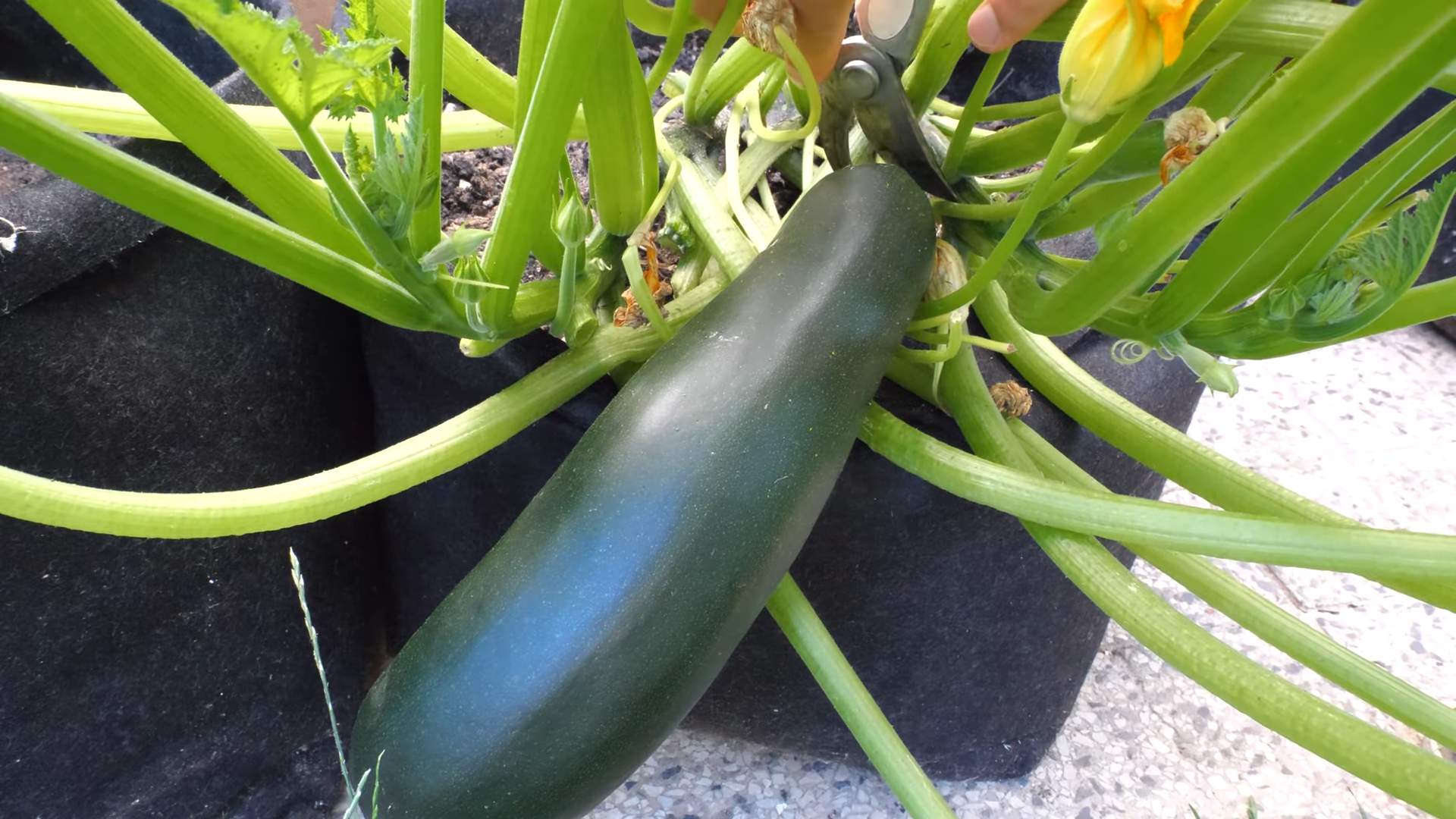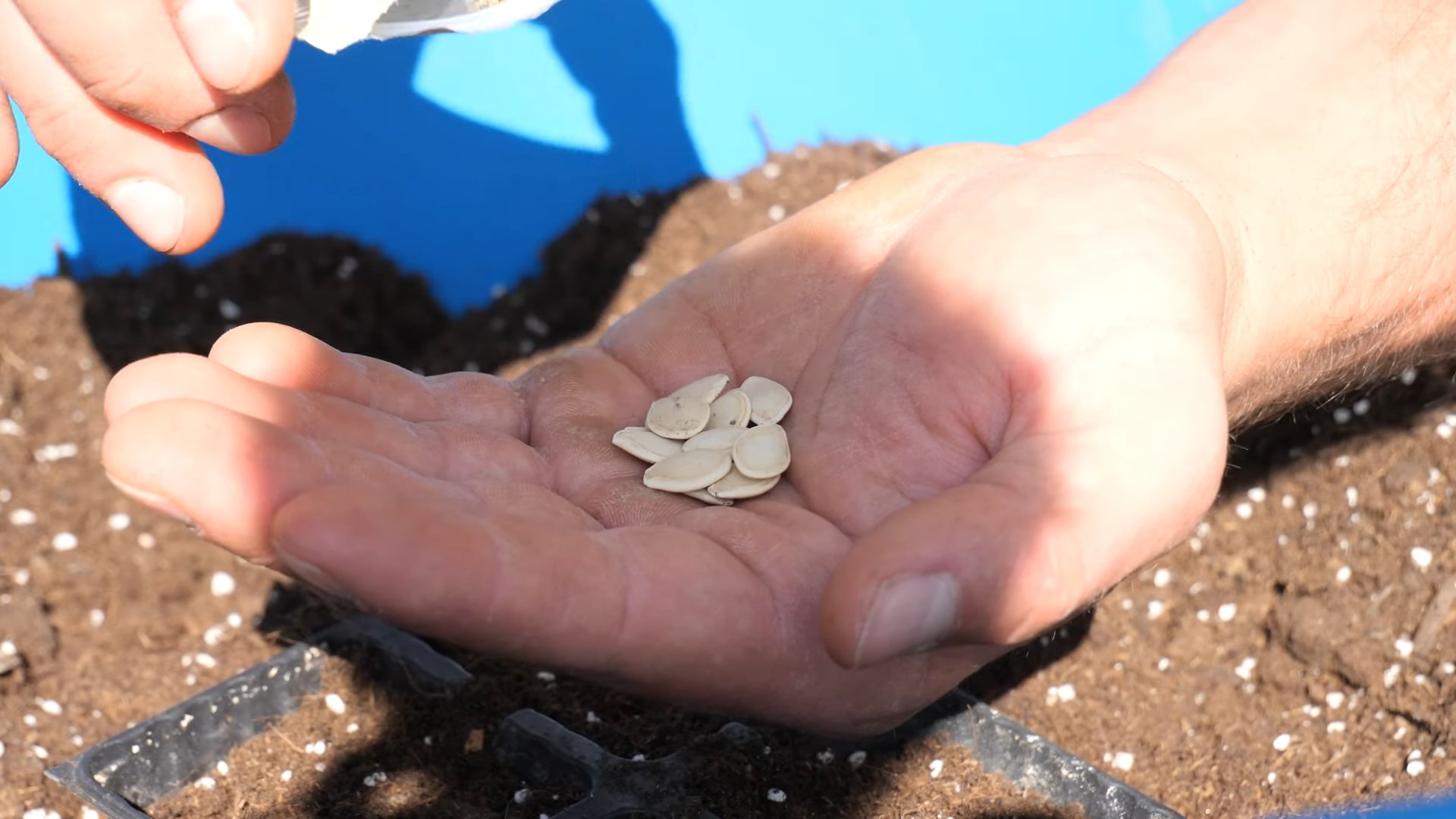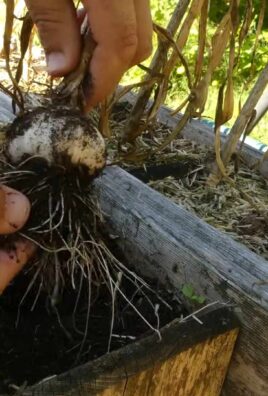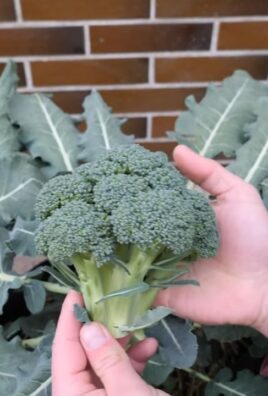Grow Zucchini Successfully, and you’ll unlock a world of culinary possibilities right in your backyard! Have you ever dreamt of harvesting an abundance of vibrant, versatile zucchini, enough to share with neighbors and experiment with countless delicious recipes? I know I have! For centuries, zucchini, a member of the squash family, has been a staple in gardens worldwide, particularly in Italian cuisine where it’s known as “zucchina.” Its ease of cultivation and prolific yields have made it a favorite among gardeners of all skill levels.
But let’s be honest, sometimes even the easiest plants can throw us a curveball. Maybe your zucchini plants are producing tons of leaves but few fruits, or perhaps they’re succumbing to powdery mildew. That’s where these DIY tricks and hacks come in! I’m going to share my tried-and-true methods for ensuring a bountiful zucchini harvest. These tips will help you grow zucchini successfully, avoid common pitfalls, and enjoy fresh, homegrown goodness all season long. Get ready to transform your garden into a zucchini paradise!

Growing Zucchini Like a Pro: My Foolproof Guide
Okay, zucchini lovers, let’s get down to business! I’m going to share everything I know about growing zucchini, from seed to harvest, so you can have a bumper crop of these versatile veggies. Trust me, with a little know-how, you’ll be swimming in zucchini bread, fritters, and more!
Choosing the Right Zucchini Variety
Before we even think about planting, let’s talk varieties. There are tons of zucchini cultivars out there, each with its own unique characteristics. Here are a few of my favorites:
* Black Beauty: A classic, reliable variety with dark green, almost black skin. It’s a heavy producer and disease-resistant.
* Costata Romanesco: This Italian heirloom has beautiful ribbed fruit with a nutty flavor. It’s a bit more delicate than some other varieties, but the taste is worth it.
* Golden Zucchini: A bright yellow zucchini that adds a pop of color to your garden and your plate. The flavor is similar to green zucchini.
* Round Zucchini (Eight Ball, One Ball): These adorable, ball-shaped zucchini are perfect for stuffing. They’re also great for grilling or roasting.
Consider your climate and growing space when choosing a variety. Some varieties are more compact than others, making them ideal for smaller gardens.
Preparing Your Zucchini Planting Site
Zucchini plants are hungry, hungry hippos! They need rich, well-drained soil and plenty of sunlight. Here’s how I prepare my planting site:
* Sunlight: Zucchini needs at least 6-8 hours of direct sunlight per day. Choose a spot in your garden that gets plenty of sun.
* Soil: Zucchini prefers well-drained soil that is rich in organic matter. Amend your soil with compost, aged manure, or other organic materials.
* pH: The ideal soil pH for zucchini is between 6.0 and 7.5. You can test your soil pH with a soil testing kit.
* Spacing: Zucchini plants can get quite large, so give them plenty of space. I usually space my plants about 2-3 feet apart. If you’re planting in rows, space the rows about 3-4 feet apart.
Starting Zucchini Seeds (Indoors or Outdoors)
You can start zucchini seeds indoors or directly sow them in the garden. I usually start mine indoors a few weeks before the last expected frost to get a head start on the growing season.
Starting Seeds Indoors:
1. Gather Your Supplies: You’ll need seed starting trays or pots, seed starting mix, zucchini seeds, and a heat mat (optional).
2. Fill the Trays: Fill your seed starting trays or pots with seed starting mix.
3. Sow the Seeds: Plant the zucchini seeds about 1 inch deep in the soil. I usually plant 2-3 seeds per cell or pot, just in case some don’t germinate.
4. Water Gently: Water the soil gently to moisten it. Be careful not to overwater.
5. Provide Warmth: Zucchini seeds germinate best in warm temperatures (70-80°F). Place the seed starting trays on a heat mat or in a warm location.
6. Provide Light: Once the seeds germinate, provide them with plenty of light. Place the trays under grow lights or in a sunny window.
7. Thin Seedlings: Once the seedlings have their first true leaves, thin them to one plant per cell or pot. Choose the strongest, healthiest seedling.
8. Harden Off Seedlings: Before transplanting the seedlings outdoors, you’ll need to harden them off. This means gradually exposing them to outdoor conditions over a period of about a week. Start by placing the seedlings outdoors in a sheltered location for a few hours each day, gradually increasing the amount of time they spend outdoors.
Direct Sowing Seeds Outdoors:
1. Wait for Warm Weather: Zucchini seeds need warm soil to germinate. Wait until the soil temperature is at least 60°F before direct sowing.
2. Prepare the Soil: Prepare the soil as described above.
3. Sow the Seeds: Plant the zucchini seeds about 1 inch deep in the soil. I usually plant 2-3 seeds per hill, spacing the hills about 2-3 feet apart.
4. Water Gently: Water the soil gently to moisten it. Be careful not to overwater.
5. Thin Seedlings: Once the seedlings have their first true leaves, thin them to one plant per hill. Choose the strongest, healthiest seedling.
Transplanting Zucchini Seedlings
Once the danger of frost has passed and the soil has warmed up, it’s time to transplant your zucchini seedlings into the garden.
1. Choose a Cloudy Day: Transplanting on a cloudy day will help prevent the seedlings from getting stressed.
2. Dig Holes: Dig holes that are slightly larger than the root balls of the seedlings.
3. Gently Remove Seedlings: Gently remove the seedlings from their pots or trays. Be careful not to damage the roots.
4. Place Seedlings in Holes: Place the seedlings in the holes and backfill with soil.
5. Water Thoroughly: Water the seedlings thoroughly after transplanting.
6. Mulch: Mulch around the plants with straw, wood chips, or other organic materials to help retain moisture and suppress weeds.
Caring for Your Zucchini Plants
Zucchini plants are relatively easy to care for, but there are a few things you can do to help them thrive.
* Watering: Zucchini plants need consistent moisture, especially during hot, dry weather. Water deeply and regularly, aiming for about 1 inch of water per week. Avoid watering the foliage, as this can lead to fungal diseases. I prefer to use a soaker hose or drip irrigation to water my zucchini plants.
* Fertilizing: Zucchini plants are heavy feeders. Fertilize them every 2-3 weeks with a balanced fertilizer. You can also side-dress them with compost or aged manure.
* Weeding: Keep the area around your zucchini plants free of weeds. Weeds compete with zucchini plants for water and nutrients.
* Pest Control: Zucchini plants can be susceptible to a few pests, such as squash bugs, squash vine borers, and aphids. Inspect your plants regularly for pests and take action if you see any. I like to use organic pest control methods, such as hand-picking pests, using insecticidal soap, or introducing beneficial insects.
* Pollination: Zucchini plants have separate male and female flowers. The female flowers need to be pollinated in order to produce fruit. If you’re not seeing any fruit set, you may need to hand-pollinate the flowers. To hand-pollinate, simply take a male flower and rub the pollen onto the stigma of a female flower. You can identify female flowers by the small zucchini fruit at the base of the flower.
Harvesting Your Zucchini
Zucchini is best harvested when it’s young and tender. I usually harvest mine when they’re about 6-8 inches long.
* Check Regularly: Check your zucchini plants regularly for ripe fruit. Zucchini grows quickly, so you’ll need to harvest them frequently.
* Cut, Don’t Pull: Use a sharp knife or pruners to cut the zucchini from the plant. Don’t pull the zucchini, as this can damage the plant.
* Handle with Care: Zucchini is delicate and bruises easily. Handle it with care.
* Store Properly: Store zucchini in the refrigerator for up to a week.
Dealing with Common Zucchini Problems
Even with the best care, you may encounter some problems when growing zucchini. Here are a few common issues and how to deal with them:
* Powdery Mildew: Powdery mildew is a fungal disease that can affect zucchini plants. It appears as a white, powdery coating on the leaves. To prevent powdery mildew, provide good air circulation around your plants and avoid watering the foliage. If you see powdery mildew, you can treat it with a fungicide.
* Squash Bugs: Squash bugs are small, brown insects that can damage zucchini plants. They suck the sap from the leaves, causing them to wilt and die. To control squash bugs, hand-pick them off the plants or use insecticidal soap.
* Squash Vine Borers: Squash vine borers are moth larvae that bore into the stems of zucchini plants. They can cause the plants to wilt and die. To prevent squash vine borers, wrap the stems of your plants with aluminum foil or netting. If you see squash vine borers, you can try to remove them by slitting the stem and pulling them out.
* Blossom End Rot: Blossom end rot is a condition that causes the end of the zucchini fruit to rot. It’

Conclusion
So, there you have it! Growing zucchini successfully doesn’t have to be a daunting task reserved for seasoned gardeners. With these simple yet effective DIY tricks, you can transform your garden into a zucchini haven, overflowing with these versatile and delicious vegetables. We’ve covered everything from soil preparation and companion planting to pest control and harvesting techniques, all designed to maximize your yield and minimize potential problems.
But why is this DIY approach a must-try? Because it empowers you to take control of your garden’s ecosystem. By understanding the specific needs of zucchini plants and implementing these tailored solutions, you’re not just growing vegetables; you’re cultivating a thriving, sustainable garden. You’re reducing your reliance on potentially harmful chemicals, promoting biodiversity, and ultimately, enjoying the freshest, most flavorful zucchini imaginable.
Think of the possibilities! Imagine zucchini bread bursting with homegrown goodness, grilled zucchini slices drizzled with olive oil and herbs, or even zucchini noodles replacing pasta in your favorite dishes. The culinary applications are endless, and the satisfaction of knowing you grew it yourself is unparalleled.
Ready to take your zucchini game to the next level?
Don’t be afraid to experiment! Consider these variations to personalize your approach:
* **Vertical Gardening:** If space is limited, try growing zucchini vertically on a trellis or fence. This not only saves space but also improves air circulation, reducing the risk of fungal diseases.
* **Companion Planting Combinations:** While we mentioned a few key companions, research other beneficial pairings. For example, planting nasturtiums can attract aphids away from your zucchini plants, acting as a sacrificial crop.
* **Compost Tea Boost:** Give your zucchini plants an extra boost by watering them with compost tea every few weeks. This nutrient-rich liquid fertilizer will promote healthy growth and abundant fruiting.
* **Seed Saving:** Once you’ve grown a particularly successful zucchini plant, consider saving its seeds for future seasons. This allows you to cultivate varieties that are well-adapted to your specific climate and growing conditions.
We’re confident that these DIY tricks will significantly improve your chances of growing zucchini successfully. But the real magic happens when you put them into practice and adapt them to your own unique garden environment.
So, grab your gardening gloves, prepare your soil, and get ready to witness the zucchini magic unfold! We encourage you to try these techniques and share your experiences with us. What worked best for you? What challenges did you encounter? What delicious zucchini recipes did you create? Your insights can help other gardeners learn and grow, creating a community of thriving zucchini enthusiasts. Share your photos, tips, and stories in the comments below – we can’t wait to hear from you! Happy gardening!
Frequently Asked Questions (FAQ)
Q: How much sun do zucchini plants really need?
A: Zucchini plants are sun-worshippers! They require at least 6-8 hours of direct sunlight per day to thrive. Insufficient sunlight can lead to stunted growth, reduced fruit production, and increased susceptibility to diseases. Choose a location in your garden that receives ample sunlight throughout the day. If you live in a particularly hot climate, some afternoon shade can be beneficial to prevent the plants from overheating.
Q: What’s the best type of soil for growing zucchini?
A: Zucchini plants prefer well-drained, fertile soil that is rich in organic matter. The ideal soil pH is between 6.0 and 7.5. Before planting, amend your soil with compost, aged manure, or other organic materials to improve its structure, drainage, and nutrient content. Avoid heavy clay soils, as they can become waterlogged and suffocate the roots. If you have clay soil, consider planting in raised beds or containers to improve drainage.
Q: How often should I water my zucchini plants?
A: Zucchini plants need consistent moisture, especially during hot, dry weather. Water deeply and regularly, aiming to keep the soil consistently moist but not waterlogged. A good rule of thumb is to water when the top inch of soil feels dry to the touch. Avoid overhead watering, as this can promote fungal diseases. Instead, water at the base of the plant, using a soaker hose or drip irrigation system. Mulching around the plants can also help to retain moisture and suppress weeds.
Q: What are some common pests and diseases that affect zucchini plants, and how can I control them?
A: Zucchini plants are susceptible to several pests and diseases, including squash vine borers, squash bugs, aphids, powdery mildew, and blossom end rot. Regularly inspect your plants for signs of infestation or disease. For squash vine borers, you can wrap the base of the stems with aluminum foil or netting to prevent the moths from laying their eggs. Handpick squash bugs and their eggs from the plants. Control aphids with insecticidal soap or neem oil. Prevent powdery mildew by ensuring good air circulation and avoiding overhead watering. Blossom end rot is caused by calcium deficiency, so amend your soil with calcium-rich materials like bone meal or crushed eggshells.
Q: When is the best time to harvest zucchini?
A: Zucchini is best harvested when it is young and tender, typically when it is 6-8 inches long. Overripe zucchini can become tough and seedy. Use a sharp knife to cut the zucchini from the plant, leaving a short stem attached. Harvest regularly to encourage continued fruit production.
Q: Can I grow zucchini in containers?
A: Yes, you can successfully grow zucchini in containers, but you’ll need to choose a large container (at least 24 inches in diameter) to accommodate the plant’s root system. Use a high-quality potting mix and ensure that the container has good drainage. Water regularly and fertilize every few weeks with a balanced fertilizer. Choose a bush variety of zucchini, as they tend to be more compact and better suited for container gardening.
Q: How can I prevent blossom end rot on my zucchini?
A: Blossom end rot is a common problem in zucchini, characterized by a dark, sunken spot on the blossom end of the fruit. It’s typically caused by a calcium deficiency, which can be exacerbated by inconsistent watering or high nitrogen levels in the soil. To prevent blossom end rot, ensure that your soil is well-drained and rich in calcium. Amend the soil with bone meal or crushed eggshells before planting. Water deeply and regularly, avoiding fluctuations in soil moisture. Avoid over-fertilizing with nitrogen-rich fertilizers.
Q: My zucchini plant is producing lots of flowers, but no fruit. What’s going on?
A: This is a common problem known as blossom drop. It can be caused by several factors, including insufficient pollination, high temperatures, or nutrient deficiencies. Zucchini plants have separate male and female flowers, and pollination is required for fruit to develop. Ensure that there are plenty of pollinators in your garden, such as bees and butterflies. You can also hand-pollinate the flowers by transferring pollen from the male flowers to the female flowers using a small brush. High temperatures can also interfere with pollination, so try to provide some shade during the hottest part of the day. Ensure that your plants are receiving adequate nutrients, especially phosphorus and potassium.
Q: Can I eat zucchini blossoms?
A: Absolutely! Zucchini blossoms are a delicious and versatile ingredient. They can be stuffed, fried, or added to soups and salads. Harvest the male blossoms, as the female blossoms are needed for fruit production. Pick the blossoms in the morning, when they are fresh and open. Gently rinse them and remove the pistil or stamen before cooking.




Leave a Comment